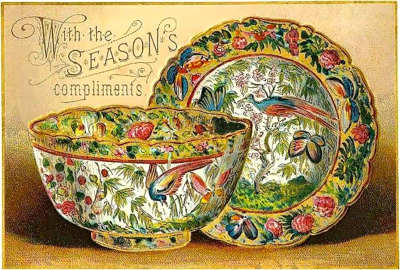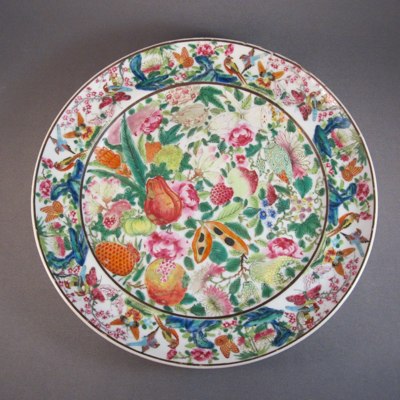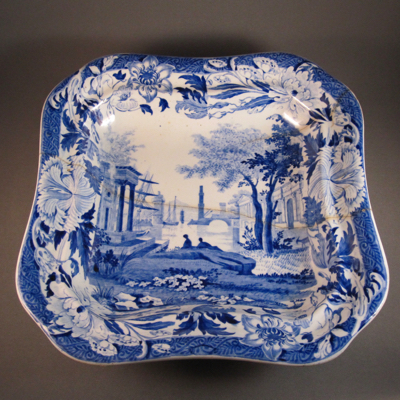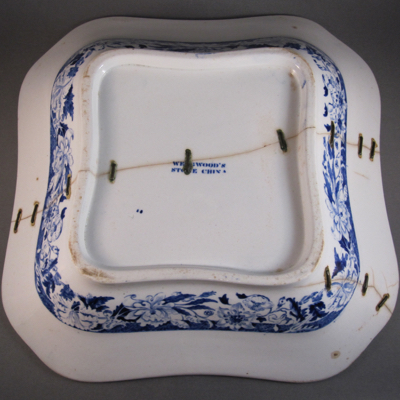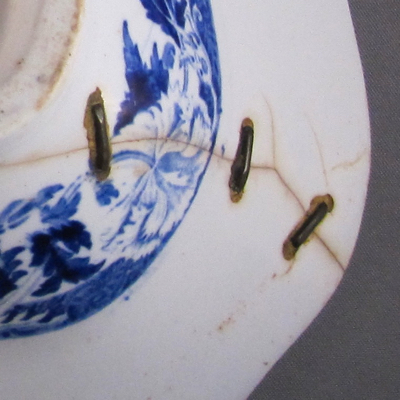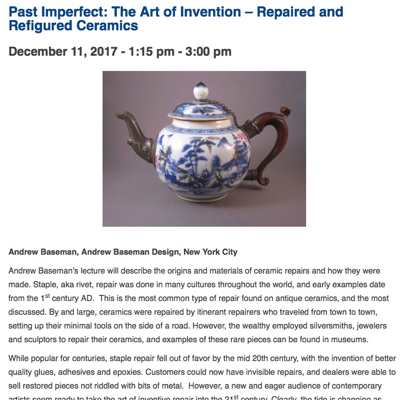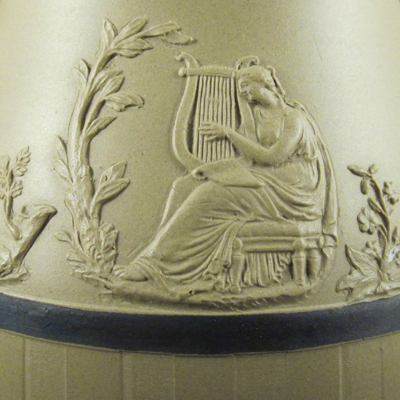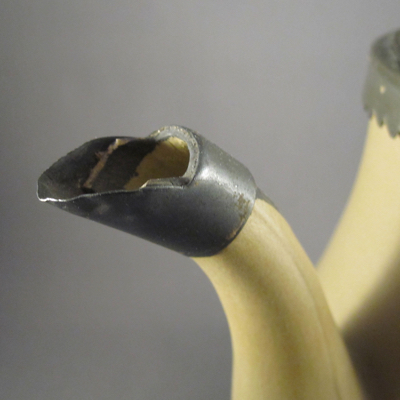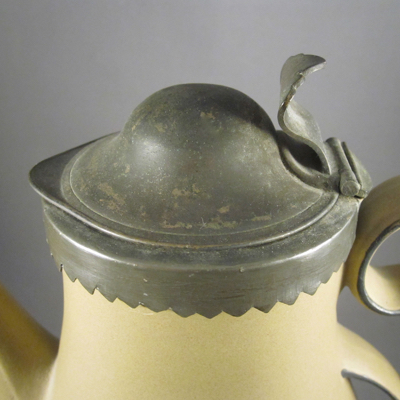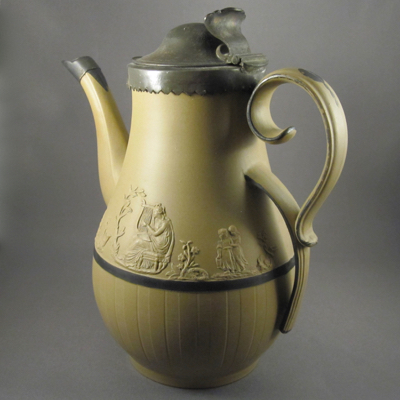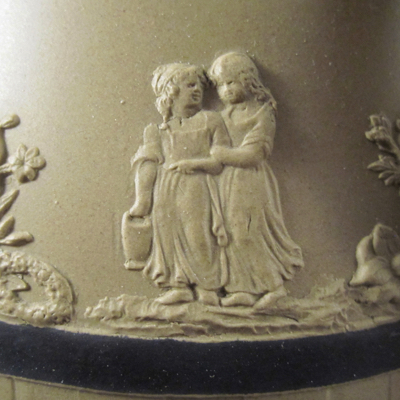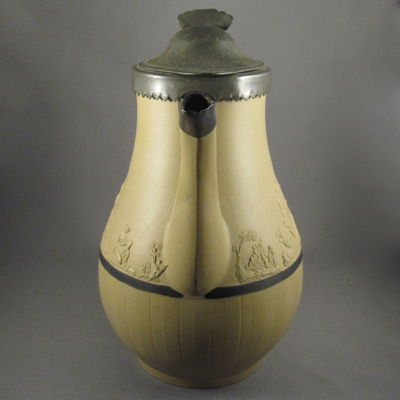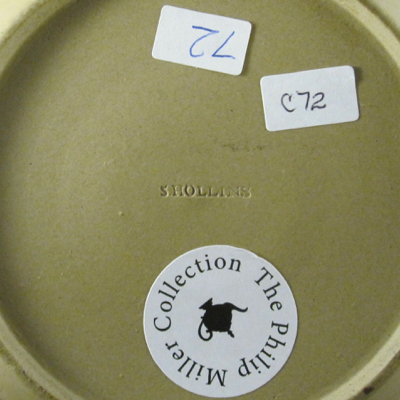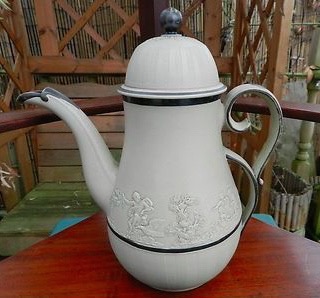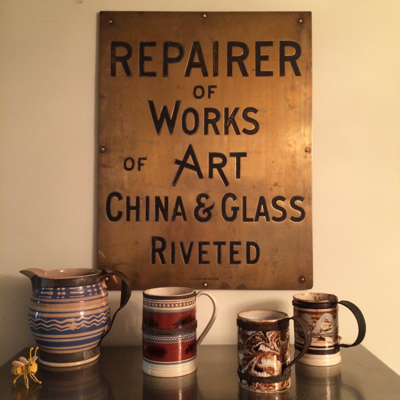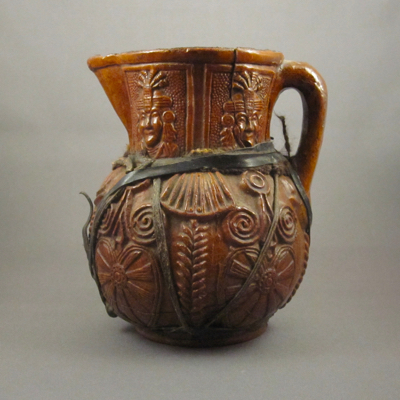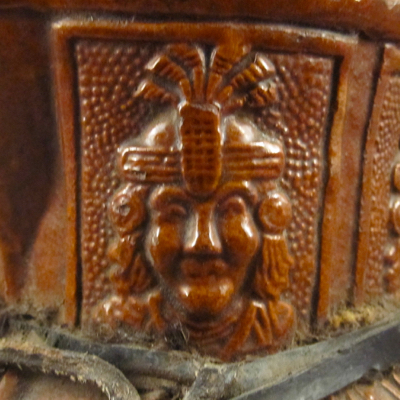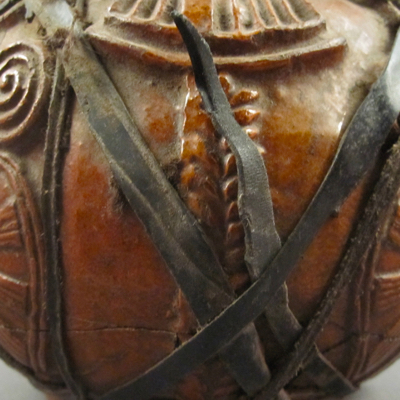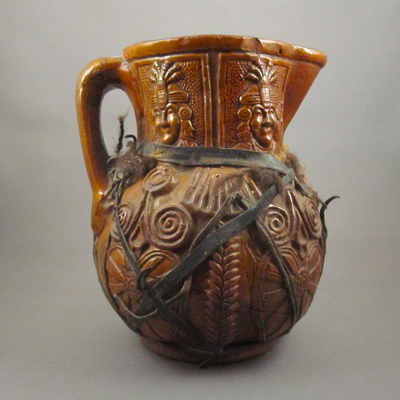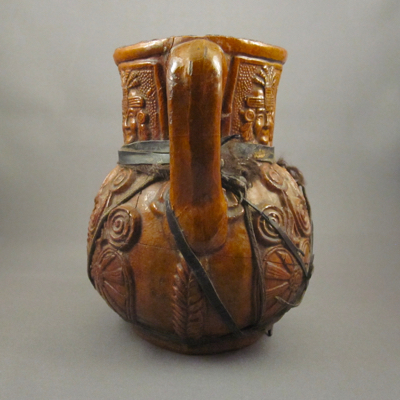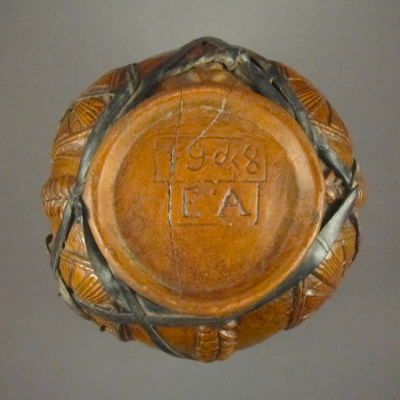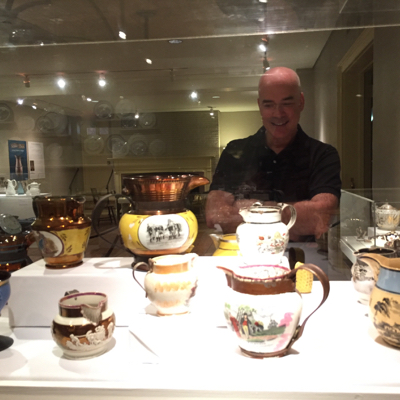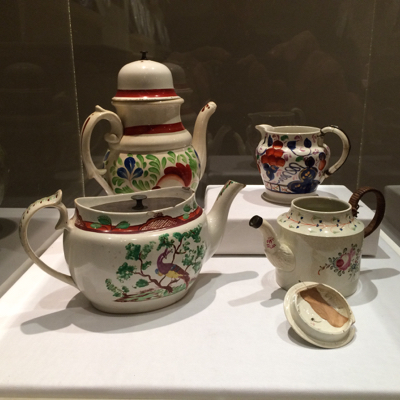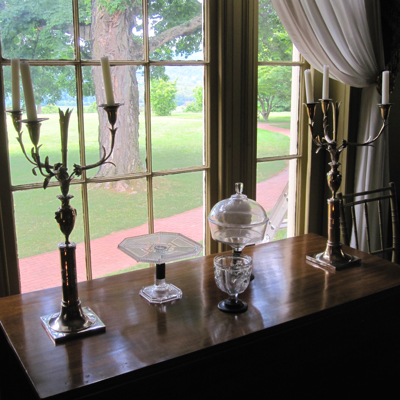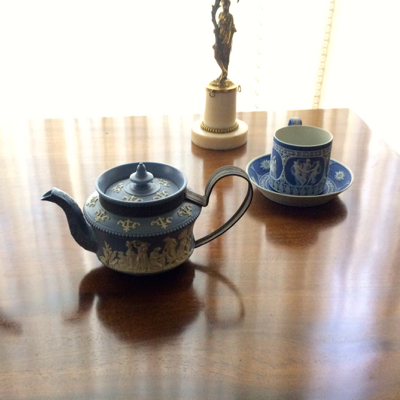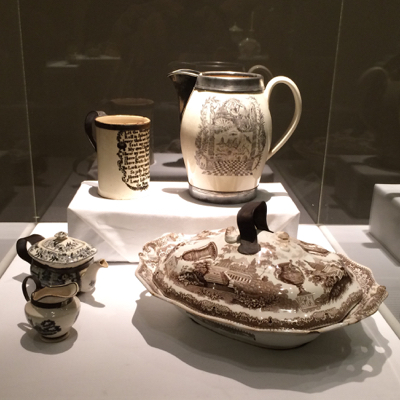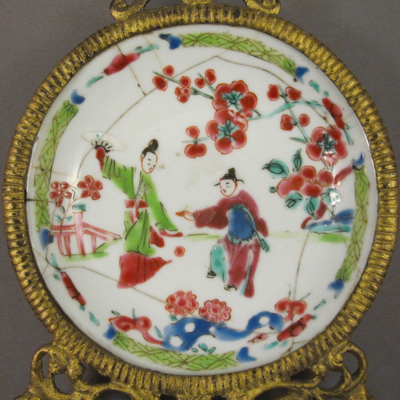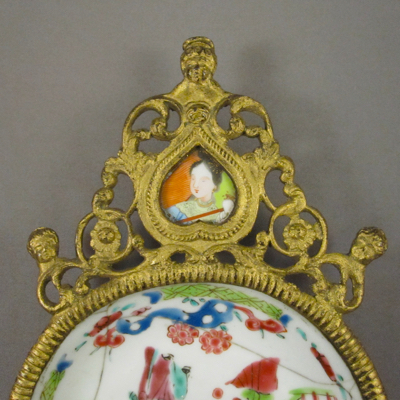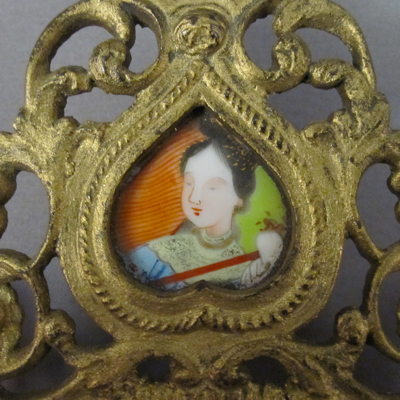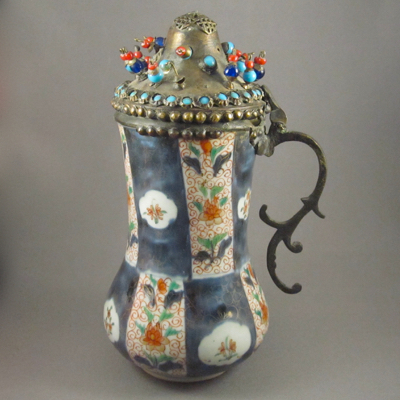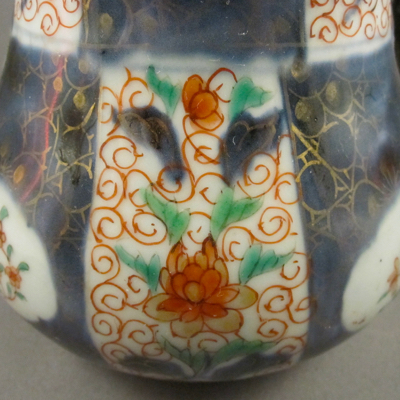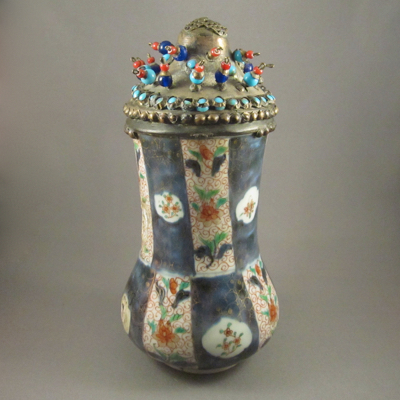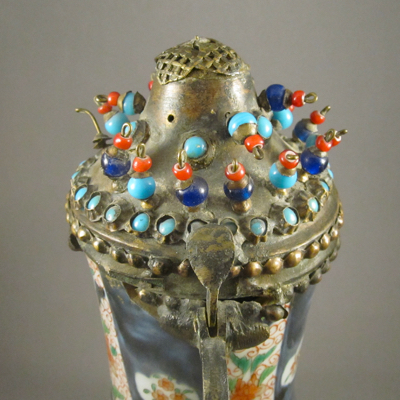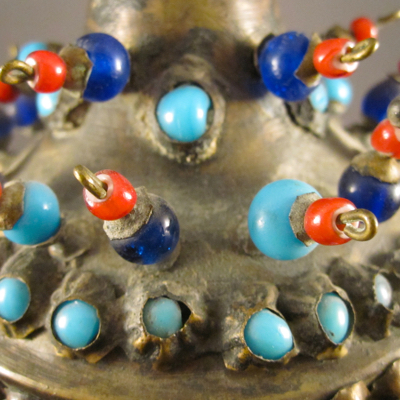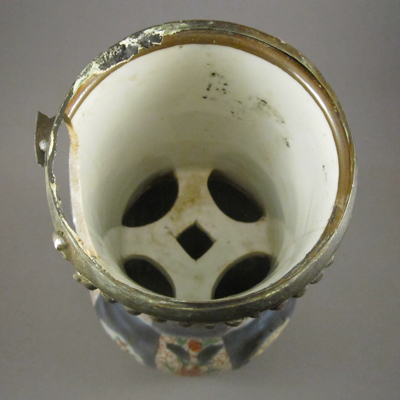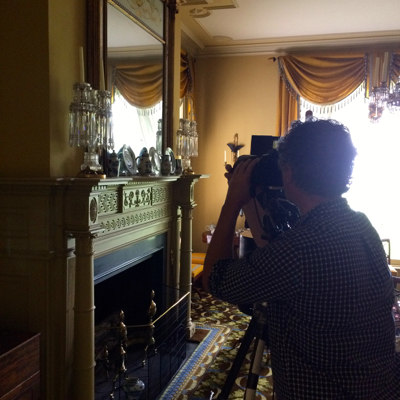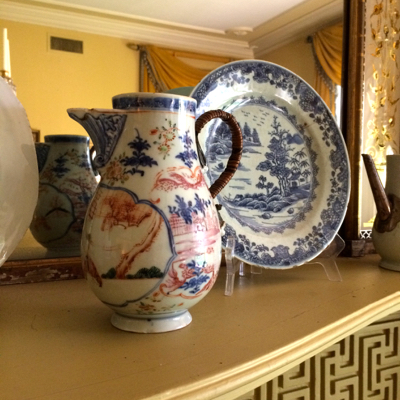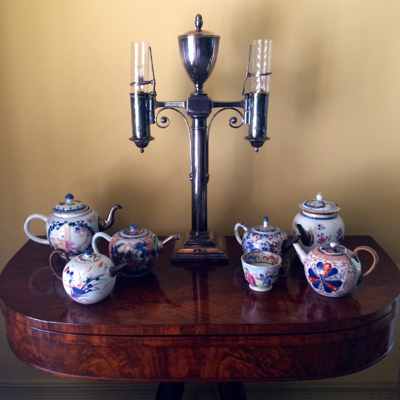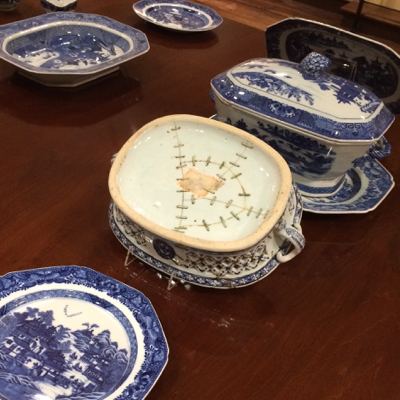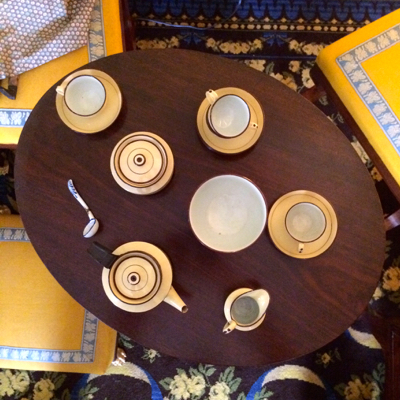Wishing you all the best for the holidays and hoping 2018 is all it’s cracked up to be!
Happy Holidays!
December 24th, 2017Blue & white transferware dish, c.1830
December 17th, 2017This serving dish was made in England by Wedgwood, c.1830. It is decorated with a blue transfer scene depicting buildings, ships, trees, and overscaled flowers along the border. On the underside is the stamped mark “WEDGWOOD’S STONE CHINA”. It measures 9 inches square.
Well over 100 years ago when this dish broke in half, it was brought to a “china mender” who repaired it using 12 metal staples, aka rivets. Originally it had a cover but I am guessing that when it took a tumble the lid was broken beyond repair. But at least the more functional piece survived and thanks to the handiwork of a 19th century restorer, this dish can still be used today.
This covered dish of similar form and decoration still has its original cover.
Photo courtesy of eBay
Connecticut Ceramics Study Circle lecture
December 10th, 2017Tomorrow, December 11, 2017, from 1:15pm – 3:00pm, I will be giving a talk at the Connecticut Ceramics Study Circle, at the Bruce Museum in Greenwich, CT. Please stop by if you are in the neighborhood.
Click HERE for more information. Hope to see you there.
My collection is back, and so am I!
November 23rd, 2017After a brief break from posting, I am back with more to share from my collection of antiques with inventive repairs.
Last weekend, the nearly 300 pieces from my collection, on loan to Boscobel for the exhibit Make-Do’s: Curiously Repaired Antiques, were returned to me. I was without them for almost a year and during that time, the suddenly empty shelves in my office slowly filled up with books and other household items. Due to time restraints, rather than methodically return the hundreds of teapots, jugs, plates, cups, goblets, etc. to my shelves in an orderly fashion, I was just able to pile them up all around the house, praying that my 2 young cats, Grady and Oscar, wouldn’t turn my prized repaired pieces back into broken antiques. As I have said before, there’s nothing more redundant than a broken make-do. So far, I am happy to report that everything is still intact!
Looking ahead, I may not be posting every week as I have for the past nearly 7 years, so please be patient with me between lapses in my posts. I have some exciting new projects I am working on and will share the results in the near future. Thank you for following my blog, which continues to bring me great pleasure, as I acquire and research new pieces and write these posts.
South American chicha jug, c.1908
October 8th, 2017This baluster-form pottery chicha jug was made from natural red clay in Boliva or Peru in 1908. It is decorated with deep carvings, including “Indio” faces and geometric forms and measures 5.75 inches high and 5 inches wide. On the underside is a bold incised mark “1908 EA.” Chicha is a fermented beverage made in South and Central America from grains, maize or fruit.
A true survivor, this little jug suffered much damage early on but is still intact 109 years later. With its elaborate design and intricate details, it must have been treasured by its owner and was preserved for future generations using whatever materials were available. By wrapping thin leather strips tightly around the multiple fractures, the jug was able to function once again and saved from the junk pile. It goes without saying that I am certainly glad it wasn’t just thrown out with the garbage.
Boscobel exhibit extended one week!
October 1st, 2017Due to an outcry from a throng of adoring fans of antiques with inventive repairs, the powers that be at Boscobel House and Gardens have agreed to extended the exhibit, Make-Do’s: Curiously Repaired Antiques. For those of you who did not get the chance to see it, or for those who would like to see it again, you now have until next Sunday, October 8th, to witness the beauty of Boscobel and see hundreds of examples from my collection.
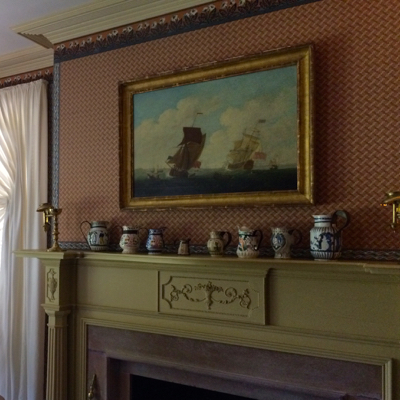
Photos courtesy of Bibiana Famolare
Mounted Kangxi dish, c.1750
September 24th, 2017This porcelain dish was made in China for export to Europe in the middle 1700s. It is decorated with figures in blue, red, green, and black enamels and measures 8 inches long, including the mount, with a diameter of 4.25 inches.
Not only was this dish repaired on the underside using 4 metal staples, each .25 inches long, but a fragment from another piece was added to the ornate bronze rococo mount. Please take a look at an earlier post with a similar porcelain dish and bronze mount: Kanji period dish, c.1700.
Photographing my collection at Boscobel
September 10th, 2017This past week I spent two days documenting the exhibit Make-Do’s: Curiously Repaired Antiques at Boscobel House and Gardens in Garrison, NY with photographer Joshua McHugh and his assistant Scott Irvine. They did an outstanding job shooting pieces from my collection throughout the house using only natural light.
Here are a few photos I took of Joshua at work and various shots from the exhibit. My sincere thanks to Jennifer Carlquist, Ed Glisson, and the staff of Boscobel for their generosity and support during our time there.
